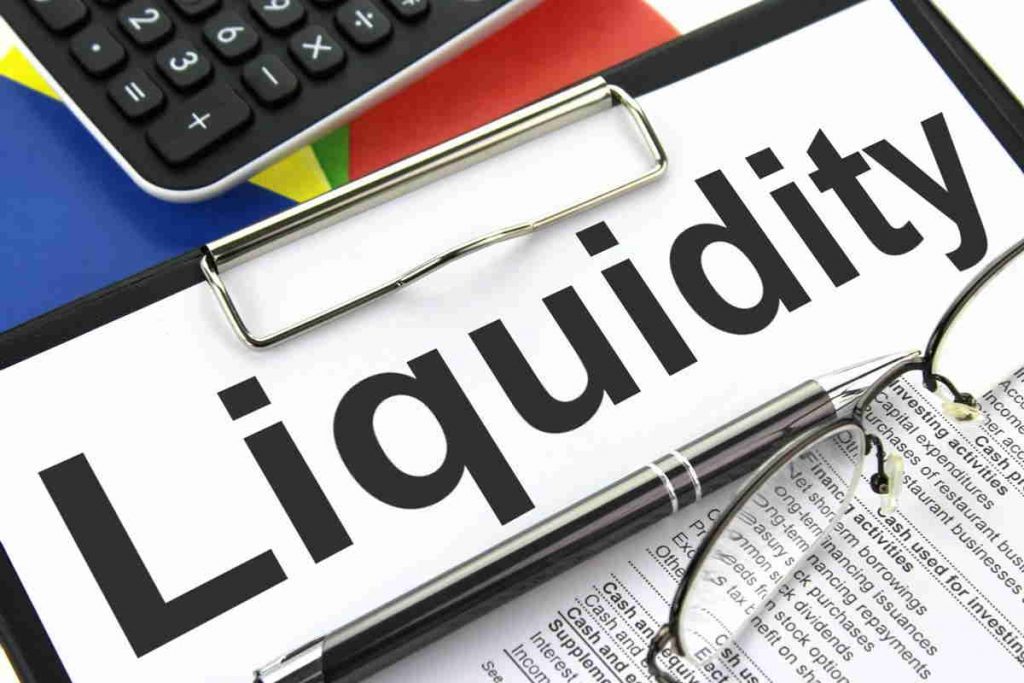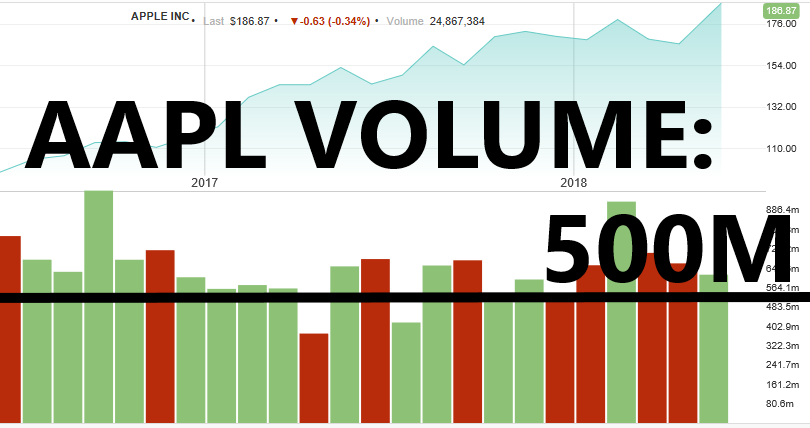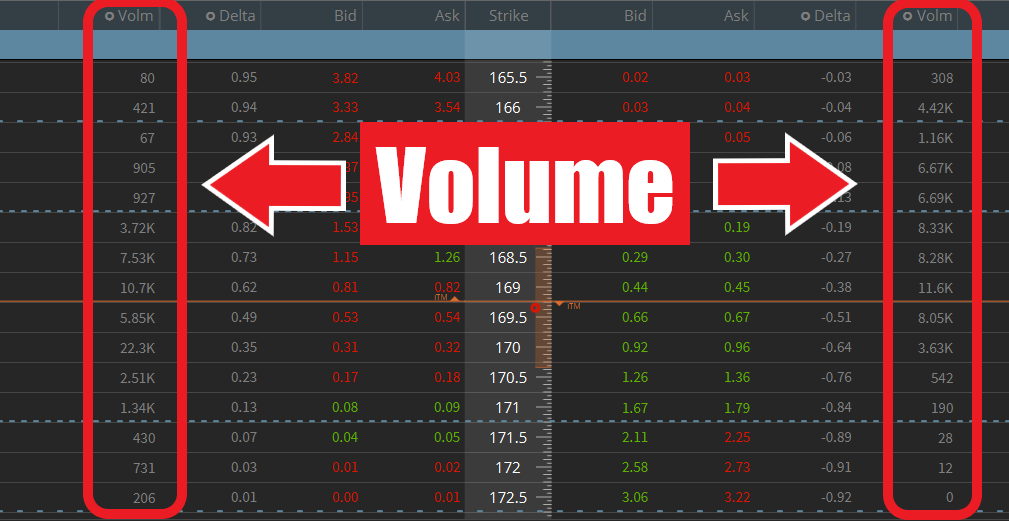Liquidity is probably the most important aspect when it comes to trading. Trading illiquid assets is one of the biggest mistakes that a trader can make. In fact, trading illiquid assets can cost you thousands of Dollars every year, lower your probability of profit and generally worsen your trading performance. In the following lesson, I will thoroughly present what liquidity is and its effect on your trading.
Video Lesson
Watch the following video lesson to learn what liquidity is and why liquidity is important.
What is Liquidity in Trading

Investopedia defines Liquidity as:
‘The degree to which an asset or security can be quickly bought or sold in the market without affecting the asset’s price.’
So liquid assets allow you to easily enter and exit positions with good pricing. Some typical features of liquid assets are:
- High Volume
- Tight Bid/Ask Spreads (the spread between the highest price a buyer is willing to pay and the lowest price a seller is willing to receive)
- Short Fill Times
- High Open Interest (for options and futures traders)
To understand the concept of liquidity better, I will present two brief examples:
The first example is one of an illiquid asset, namely real estate. Real estate is considered illiquid because only relatively few people are involved. Thus the Bid/Ask spreads often are very wide. A spread of many thousand Dollars isn’t unusual. If someone is trying to sell a house for $250 000, a buyer may very well make an offer at $200 000 ($50 000 spread). Due to these wide spreads, buyers and sellers often have to wait months or even years before they finally can sell/buy a house.
Now let’s compare this to a liquid asset: Apple’s stock (AAPL). AAPL trades millions of shares every single day. Therefore, the Bid/Ask spread usually isn’t wider than one or two pennies. This also means that it is extremely easy and fast to enter and exit positions in AAPL. The executions normally are immediate.
Hopefully, these two examples give you a good idea of what liquidity is. I will now present the impact of liquidity on your trading.
Why Liquidity is Important
1. The Bid/Ask Spread

The Bid/Ask spread is probably one of the most underestimated and forgotten costs when it comes to trading and liquidity. In fact, many people don’t even really know what the cost of the Bid/Ask spread is despite its consequences. The bid price is the highest price a buyer wants to pay for the asset and the ask price is the lowest price a seller wants to sell the asset for. The difference between these two prices is considered the Bid/Ask spread.
The less liquid an asset is, the wider the Bid/Ask spread becomes. This is the case because bad liquidity means fewer players. Let’s use gold as an example here. If there is only one single seller of gold, he can choose whatever price he wants to. The same goes for a single buyer. If you are the only one buying gold, the seller that wants to sell his gold has to take your price or keep his gold. However, if there are hundreds of people bidding for the gold, the seller will obviously take the best one. The same goes for a buyer. If you want to buy gold, you would take the best possible price (lowest ask price). The more people are involved, the better prices become and the smaller the difference between the bid and ask prices becomes.
Usually, you will only be able to buy at the ask price and sell at the bid price. This means that you lose some money due to the spread.
Let’s say ABC has a $0.5 wide Bid/Ask spread. If you open a position in ABC and immediately close it again without giving the price time to move, you might think you wouldn’t lose or make any money (apart from commisions). But due to the Bid/Ask spread, you would actually lose $0.5 per share. Even if the price would have moved in your direction, you would lose some money due to the spread.
If ABC was trading at $100/$100.5, you would have had to pay $100.5 per share when buying. If ABC’s price would have rallied up to $110/$110.5, you would only receive $110 (per share) when selling. So even though the stock price increased by $10, you only made $9.5 per share (-commisions). Even though this might not seem like a lot, it does add up and can dramatically impact your trading over time.
To emphasize the impact of the Bid/Ask spread over time, here is another example:
The ABC trade that I just presented is a typical trade for Bob. He mainly trades illiquid asset. His average size per trade is only 100 shares and he makes around 100 trades in a year. Due to the $0.5 wide Bid/Ask spread, he loses about $0.5 per share on every trade. This means he loses about 100 x 100 x $0.5 = $5000 every year due to the Bid/Ask spread!
That’s a $5000 loss without taking commissions or other trading losses into account! And remember that’s with only 100 shares per trade which really isn’t a lot.
Now let’s compare this to a liquid asset with a tight Bid/Ask spread. If Bob would make the same amount of trades with the same amount of shares on an asset with a $0.01 wide Bid/Ask spread, he would only lose about 100 x 100 x $0.01 = $100 in a year. That’s much more acceptable than the previous figure.
Here are two examples of a liquid (PowerShares QQQ) and an illiquid (Aqua Metals) asset. Both of these screenshots were taken in early pre-market (so before the regular trading session even began).
QQQ already has a volume of over 181 000 and a $0.01 wide Bid/Ask spread. During a normal trading session QQQ usually has a volume of multiple Million.
AQMS has no volume yet and an almost $0.7 wide Bid/Ask spread which is very wide, especially considering the stock’s low price.

![]()
As you can see, the Bid/Ask spread can have a huge impact on your trading performance. So make sure to only trade liquid assets with tight Bid/Ask spreads.
2. No Market – No Players – No Exits
Just like we discussed earlier, bad liquidity often means a small number of other players. This affects the Bid/Ask spread in a negative way. Furthermore, it affects the time it takes of orders to get filled. Fewer players mean fewer people entering and exiting positions in an asset.
It is important to understand that when an order of yours gets filled, another party (or multiple parties) was found that took the opposite side of your position. So if you buy 100 shares of stock, someone else just sold 100 shares of the same stock. If the volume of an asset is high and millions of people enter and exit positions, it will be easy to find a counterparty for your trade. However, if there are only a few people opening and exiting positions in that asset, the chance of getting filled (at the desired price) decreases. The smaller the number of traders, the unlikelier the chance of getting filled becomes.
Let’s clarify this with a brief example:
Apple is a huge and very successful company. Nowadays, Billions of people own at least one of Apple’s products. Countless investors and traders want to take part in Apple’s success and therefore, they trade Apple’s stock. Some do it for long-term gains and others trade AAPL for the short-term. Millions of Apple shares are traded every single day. If anyone thinks that Apple’s stock is a good buy, he can easily buy X shares at the current market price and will likely get filled within milliseconds. With the same ease, this person can close his AAPL position whenever he feels it is right to do so. This is all thanks to the extreme liquidity of Apple.

However, if you want to trade a different asset, things can look quite different. Even some options on Apple’s very liquid stock can be troublesome to enter and exit. This is the case because far fewer people are trading these options than there are people trading the stock.
Let’s say, you currently own 100 contracts of long call options on AAPL. The problem is that these options have three days left until they expire and they are $20 Out of The Money (OTM). This means AAPL would have to rally over $20 for you to make a profit on that position. As there is only a very slim chance of this happening, you decide to close the position before your loss increases even more.
Now ask yourself the question, why anyone should take the opposite side of your trade? The only real reason that I could think of is that someone wants to close his/her position that coincidentally is the exact opposite of your position. However, the chances that this is the case aren’t high. Therefore, the liquidity and the volume for that option are very low.
To close your position, you would likely have to wait a long time and choose bad pricing. But even then, it is not guaranteed that a counterparty will be found. So it’s definitely possible that you will be stuck in that position and believe me that isn’t a pleasant feeling.
So another big risk of illiquid assets is getting stuck in (winning or losing) positions or at least having to wait a long time for fills (+ bad pricing).
3. Probability of Profit
Wide Bid/Ask spreads actually decrease the probability of making money on a trade because the price of the asset has to move more for you to yield a profit.
If an asset has a $0.5 wide Bid/Ask spread and you decide to buy it, the price would have to rise by more than $0.5 so that the position can become profitable and that’s without considering commissions.
Once again, I will use a brief example to explain this:
Stock ABC is trading at $10.0/$10.5 and has a Bid/Ask spread of $0.5. You buy 100 shares and have to pay $1050 for the position (100 x $10.5). If you would sell the position straight away, you could only do so at the bid price ($10). But this would leave you with a $0.5 loss per share (so $50 in total). To break even on this position, ABC’s price would have to rise by $0.5. The new bid price would then be $10.5 and the ask price $11.0.
In other words, ABC’s price would have to increase by 5% for you to just break even (still without taking commissions into account).
As the price has to move more on illiquid assets with wide Bid/Ask spreads, the probability of making money on a trade decreases.
Conclusion:
Hopefully, you understand why liquidity is important by now. If you decide to trade illiquid assets, your trading performance will suffer dramatically! So don’t make that mistake. If anyone ever tells you to trade illiquid assets, he either doesn’t know better or wants to rip you off.
Liquidity is and should be the top metric to look at for every trading system/strategy.
Bad liquidity will negatively impact:
- The Bid/Ask spread: Wide Bid/Ask spreads can lead to big losses over time
- Your probability of making money: The wider the Bid/Ask spread, the further the price of an asset has to move for you to make money. Thus, the probability of profiting decreases.
- Fill times: It is much harder to find a counterparty for your trade in illiquid assets than it is in liquid assets. Therefore, you often have to wait long times and/or accept bad prices. In very illiquid assets, you sometimes won’t even be able to find a counterparty and therefore, will be stuck in your position(s).
To check how liquid an asset is, always look at the following aspects:
- Volume: Volume is the number of shares/contracts traded during a given time-period. Usually, the higher the volume is, the better the liquidity becomes. Ideally, an asset should have a daily volume of over one Million.
It can also be a good idea to look at the Dollar volume of an asset. 100 000 shares traded of a $1 stock is much worse than 100 000 shares of a $100 stock. To calculate the Dollar volume you have to multiply the current stock price by the volume. - Bid/Ask spread: Hopefully, you now know what a huge impact a wide Bid/Ask spread can have on your trading performance. Therefore, try to always look at the Bid/Ask spread of an asset before trading it. Optimally, this spread should not be wider than a few pennies.
- Open Interest: This is relevant for options and futures traders. Open interest shows the number of outstanding (not yet closed) contracts of a specific options/futures contract. The higher this number, the better as most of these contracts still have to be closed sometime in the future.
When trading derivatives like options, it is important to not only look at the volume and Bid/Ask spread of the underlying asset. Also look at the volume and spread of the derivative itself. Just because the underlying asset is liquid, does not mean that the derivative (e.g. option) is liquid.
So for options, always look at the volume and spreads of different options.
The following image shows some very liquid options on an option chain inside of the broker platform tastyworks:

No matter what you want to trade, you should always keep an eye on liquidity and only trade liquid assets!!!
Have you traded illiquid assets in the past? Let me know in the comment section below.
This Article is part of the Intermediate Option Trading Course. If you are reading the article as a part of the course, you can continue to the next lesson: HERE

Now I understand Liquidity and it’s impact on buying or selling an asset. You also clearly defined how liquidity affects the amount of buyers and sellers available and that it leads to bad pricing and can lead to a wide bid/ask spread and probably worst of all leave you stuck whether in a winning position or not which sounds very frustrating.
This was really informative overall.
Thanks so much for the comment! You summed up the main points very good.
I know going into the stock market can be intimidating, and investing in options even more so, but I feel as if this does an excellent job explaining how to trade options. I got a better understanding of how I can lose money on the bid/ask spread alone. I never realized that until now, so thank you! I appreciate that, and will use it moving forward in my future trades.
These seem like remarkable lessons. Thank you.
My pleasure.
The comparison between real estate and AAPL is a great analogy to explain the difference between an illiquid asset and a liquid asset. I hadn’t heard it explained quite that way before, and yet, that makes a lot of sense.
You definitely make a great case for trading only liquid assets. There are times, though, where I might want to buy an option on an illiquid biotech stock since I know a few people in the industry who have offered good insights. With that in mind, is there a maximum limit to the bid/ask spread that you would recommend? Would it depend on how far I think the stock could move?
Thanks for any insight you can offer and for your informative video and post — I will be visiting your website again.
I am very happy to hear that you enjoyed my content. I don’t really have a concrete maximum width for bid/ask spreads to be tolerable. The tighter the spread, the better.
You just have to understand that you will lose the width of the spread on every trade that you make on that asset. If you can accept that and think a correct prediction will make up for that loss then you could still make the trade.
But besides the money lost from the spread, you are also risking getting stuck in your position if the liquidity is very bad. Really make sure that the volume isn’t too low and you can still exit your position safely.
Always be aware of the risks and then decide for yourself if the potential reward is good enough to take on those risks.
Hopefully, this helps.
Thank You!!
You are very welcome!